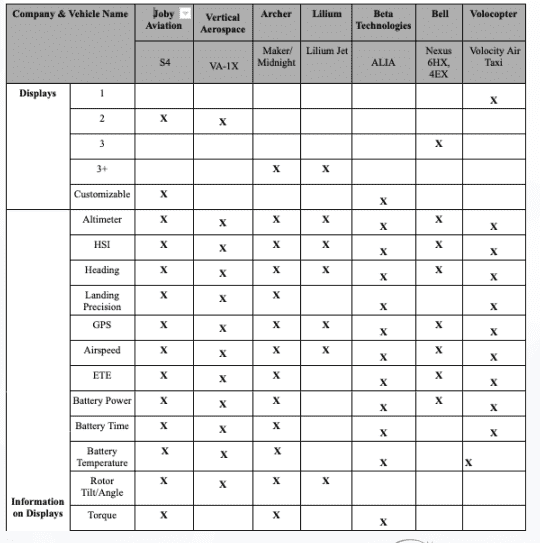Me, eVTOL. You, Pilot. Now, What?
Trends in pilot interfaces

At a recent meeting of the National Training Aircraft Symposium (NTAS), Dr. Maria Chaparro Osman, Ph.D., Bhoomin B. Chauhan, Kendall Carmody, and Dr. Meredith Carroll from the Florida Institute of Technology, presented the findings from their study, “Advanced Air Mobility Human Factors Considerations for Current eVTOL Pilot Interfaces.”
The researchers hoped to accomplish three goals with their study:
· Identify and describe the range of eVTOL aircraft configurations
· Provide insight into proposed eVTOL pilot interface and control concepts
· Identify commercial-off-the-shelf eVTOL simulation testbeds available to conduct human factors research related to eVTOL pilot interfaces.
With more than 600 concepts in varying stages of development cataloged in the Vertical Flight Society’s eVTOL Aircraft Directory, the research team shortlisted 15 aircraft for study, based on funding, operation type, and the anticipated enter-in-service (EIS) year. That list was further pared down based on propulsion type and payload.
Based on an aircraft concept’s then-current stage of development (flight testing, certification status, piloted versus UAV), the study narrowed the finalists down to 10 leading vehicles. They then extracted data associated with pilot interfaces and available simulation testbeds from industry and company websites, social media, and press releases.
Which eVTOLs made the cut?
Using the criteria the researchers established, these manufacturers eVTOLs were selected for study:
• Volocopter S4
• Beta Technologies’ Alia
• Eve
• Lillium Jet
• Vertical Aerospace VX-4
• Supernal SA-1
And we’re trending, trending, toward…
By studying a key subset of the evolving eVTOLs, several trends emerged in the pilot interfaces being developed:
· Larger, glass touchscreens with customizable displays
· Single and dual setups
· Reduced information redundancy
· Integrated battery information
· Inceptors to fly the aircraft
· Single pilot operations (SPO) interface
· Inclusion of emerging technologies, such as synthetic vision and advanced sensors information display.
The customizable displays included today’s conventional flight information pilots use, such as: airspeed, altitude, heading, horizontal situation indicator (HSI), GPS, electric battery power information (power, temperature, system checklist), RPM, torque, landing precision, rotor tilt angle, and estimated time to destination and en-route.
Using this information, neatly organized and visualized, everyone from manufacturers to regulators, and ultimately, customers, will be able to discern which human factors currently most influence the pilot interfaces under consideration.
That information in hand, the next steps will be to study the influence various pilot interface configurations have on a pilots’ situational awareness, workload, and performance. That will, in turn, inform the pilot training requirements for eVTOL operations as UAM/AAM moves from the design lab to the vertiports in development to accommodate them.
Subscribe to AeroCar Journal today, (it’s free for a limited time). Follow us on Facebook, Twitter, and LinkedIn. Visit the Vertical Flight Society for the most comprehensive directory of eVTOL aircraft directory
#eVTOLs, #UAM, #AAM


